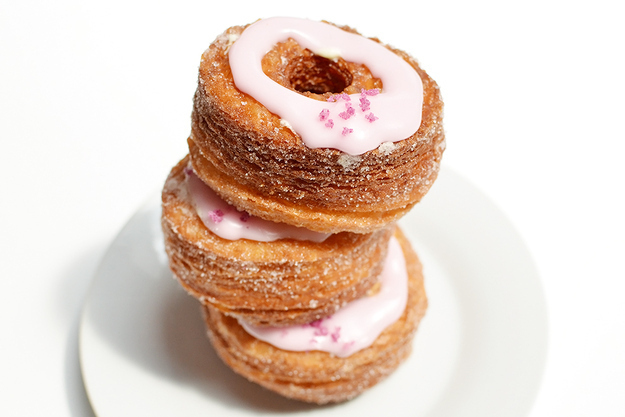
When the subject of cronuts came up in a recent BuzzFeed editorial meeting, once everyone's eyes had stopped rolling, someone told this story: A friend of hers went to Dominique Ansel's now-famous bakery in NYC to buy a cronut — the croissant-donut hybrid Ansel invented in May. (For the uninitiated, here's more cronut backstory.) After waiting in line the requisite two hours at 6 a.m., the friend somehow came back from the bakery with a canelé, thinking it was a cronut, and said it was the most delicious thing she had ever tasted.
It probably was. Therein lies the irony of the cronut craze: YES OF COURSE they are worth the hype. Stop rolling your eyes at cronuts, food lovers: These flaky, tender glorious treats are handmade under the direction of one of America's most talented pastry chefs. This is not a Taco Bell waffle taco we are talking about. Ansel started his formal culinary training in France when he was 16 years old, spent seven years traveling the world to open shops for Fauchon, and was the executive pastry chef for Daniel Boulud.
You know what else is worth hype? Ansel's canelé — a dessert whose history traces back to at least 17th century France. Also amazing: his Chausson aux Pommes, Pain Au Chocolate, and Sablé Breton. Most of these are based on the same technique he used to invent cronuts: a pastry dough intricately laced with massive amounts of butter that serves as the base for most Vienoisseries, a style of classic French pastry that caught on in 19th century France and now apparently includes the cronut.

A recent Jacksonville TV news broadcast about a local bakery's imitation cronut goes on and on about how hard it is the make cronuts. "Fold in a block of butter, roll it out, fold it in thirds, roll it out, fold it in thirds, about three times," the announcer says.
Sure, it's hard, but that's just how you make any croissant dough.
Most Americans know what a croissant is. But most of them have never had a decent one — and certainly not one as good as Dominique Ansel's. Classic French pastries, especially Vienoisserie, are absolutely amazing — both because of their flavor and texture and because they exist, meaning someone somewhere figured out all the steps, temperatures, and chemical reactions necessary to make them so perfectly. These baking methods are time consuming, exacting, and difficult — and for all of those reasons, good French pastry is not easy to find and is underappreciated in this country.
Until, maybe, now. Sure, the cronut hype is blow out of proportion. But if it takes some fancy fried croissant dough with a funny name to teach us how amazing good pastry is — and how talented these chefs are — then that's just fine. If that's not what happens, this media explosion is a wasted opportunity. (Except by Ansel, who recently turned the cronut's success into charitable donations to NYC's Food Banks.)
So here's how you an make cronuts worth the hype: Visit your best local bakery — maybe even that very one that ripped off Ansel's cronut and is now selling "dossants." Buy a "croughnut," or whatever, but here's the important part: BUY SOMETHING ELSE.

